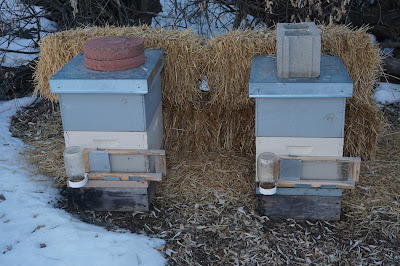I fell in love with beekeeping the second my family got their first hive back in the late sixties, early seventies in NC. My dad had always wanted bees and it was my mom who gave him the gift of bees.
Driving down a dirt road in the family station wagon we ended up at a peanut farm just after the sun had gone down. I could barely contain my excitement. This was the coolest thing I had ever been a part of. We picked up two hives, each were clamped together with braces and the entrances sealed shut with a wooden bar. These bees were not escaping and I was far from being afraid. These were my dad’s first hives. They were Italian bees. We drove home without an incident and I was fascinated watching my dad set them up not too far from our house in the back yard. I knew right then and there I would have my own hives one day.
We teased my dad about the way he kept bees. He had no mentor and gathered information from books and by trial and error. When it came time to retrieve the honey he would line up whomever of his six kids willing and brave enough to be handed a frame of honey and tell us, “ walk straight to the house, do not stop, do not panic and put these in the kitchen.” I can’t believe we did it this way now but we did, without problems and straight into the kitchen. Later my dad would take a heated knife, uncap the wax and cut squares from the frames. Most of the time he just put these square pieces of wax full of honey in a mason jar. Other times my father was extremely unconventional, slicing a piece of comb full of honey and place it right in a cut off pair of brand new panty hose and then squeeze them until all the honey had been extracted. We laugh about this now but back then we thought this was just the way it was done.
Today our swarms are delivered by mail, picked up from a drop-off location or collected as swarms in trees or buildings.
The first bees I ever owned were Buckfast bees for their extreme gentleness. They were developed by a monk in 1920’s by Brother Adam of Buckfast Abbey in England. Many argue whether they are a race or hybrid bee but being one of little knowledge in the genetics of bees I got them because they were mellow and at the time, easy to get. I raised them in my backyard in Denver, Co and never lost a hive in over five years until one day they swarmed. I have also tried Starline, Midnight and Italian. My hives for the last 4 years have been Italian. Thank goodness I have never experience the Varroa mite (a parasite that latches onto the bees suppressing their immune system – a huge threat in today’s hives) -, I do medicate. I have lost many hives to colony collapse, moths and mice. Colony collapse is very sad and moths are gross – they lay eggs and the larvae make their way through the hive making a mess and basically take over a somewhat weak hive.
People have asked what bees do now that it is winter. We start in the fall by making sure the hives have enough honey to keep the bees going for the winter. We never take the two bottom supers leaving those for brood and food for the bees. The bees form a ball or cluster of bees keeping the center of the ball at 92-94*. They reve up their metabolism to keep the hive warm and they do this with honey. The ball of bees move the cluster to get to the honey. We have lost weak hives that had honey but didn’t have the strength to move everyone to get to it. We do use bales of hay as a wind break around our hives. There is not a lot to do during the winter. Most people build more hives or frames during the winter. It is also a good time to catch up on reading and learning as much as you can about bees. We are were able to take classes from the botanical gardens in the winter about beekeeping.
For now we will look forward to spring and ordering more bees.
A view from the hives. This is the alfalfa field .
Looking toward home.




No comments:
Post a Comment